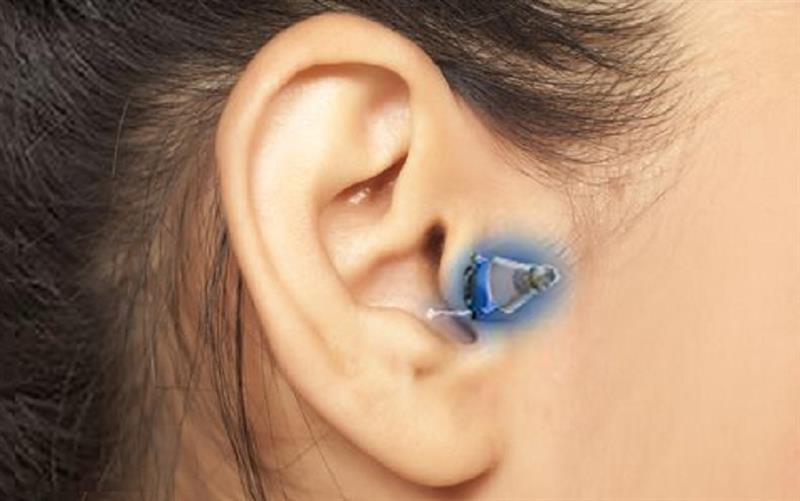
Although the technology underlying hearing aids has progressed dramatically over time, all hearing aids—regardless of price—are not created equal. Actually, the price of those with extensive sophisticated features tailored to your hearing profile will be significantly higher than that of those with fewer characteristics.
Selecting the right hearing aid involves considering factors such as the degree and type of hearing loss, lifestyle needs, budget, and personal preferences. Consulting with a hearing healthcare professional is essential to ensure that you choose the best hearing aid for your specific needs.
Absolutely, not all hearing aids are the same. Hearing aids come in various types, styles, and features, tailored to meet the diverse needs of individuals with hearing loss. Some factors that differentiate hearing aids include:
1. Technology:
Hearing aids vary in terms of the technology they use. Some have basic features, while others incorporate advanced technology like noise reduction, directional microphones, and Bluetooth connectivity. It Includes:
- Digital Signal Processing (DSP)
- Automatic Adaptation
- Wireless Connectivity
2. Features:
Different hearing aids offer different features to improve hearing in various environments. For example, some may have telecoil functionality for better phone compatibility or rechargeable batteries for convenience. It Includes:
- Noise Reduction
- Directional Microphones
- Feedback Cancellation
3. Water Resistance:
Some hearing aids are designed to be water-resistant or even waterproof, making them suitable for individuals with active lifestyles or those who live in humid environments. Water resistance in hearing aids refers to their ability to withstand exposure to moisture, sweat, and humidity without sustaining damage. Here's why water resistance is an important feature in hearing aids:
- Active Lifestyles
- Humid Environments
- Everyday Protection
4. Remote Control and Smartphone Apps:
Some hearing aids come with remote controls or smartphone apps that allow users to adjust settings, volume, and programs discreetly and conveniently. These are convenient features available with many modern hearing aids, offering users greater control and customization over their listening experience. Here's why these features are beneficial:
- Convenience
- Discreet Adjustments
- Remote Control Monitoring
5. Comfort and Fit:
Comfort and fit are essential factors for long-term use of hearing aids. Some models offer customizable ear molds or come with different sizes of domes to ensure a comfortable and secure fit. Comfort and fit are crucial aspects of a hearing aid's design and functionality, directly impacting the user's experience and overall satisfaction. Here's why comfort and fit are important considerations:
- Long-Term Wearability
- Enhanced Performance
6. Battery Life:
Battery life can vary depending on the type of hearing aid and the level of technology. Rechargeable hearing aids offer the convenience of not having to replace batteries regularly, while traditional battery-powered models may require more frequent battery changes. Battery life in hearing aids refers to the duration that the batteries can power the device before needing to be replaced or recharged. Here's why battery life is an important consideration for hearing aid users:
- Longevity
- Convenience
- Cost-Effectiveness
7. Tinnitus Management:
For individuals with both hearing loss and tinnitus, some hearing aids offer built-in tinnitus management features, such as masking or sound therapy, to help alleviate tinnitus symptoms. Tinnitus management is a feature available in certain hearing aids designed to help individuals cope with the symptoms of tinnitus, such as ringing, buzzing, or humming sounds in the ears. Here's why tinnitus management is valuable:
- Sound Therapy
- Customizable Settings
- Combination Devices
8. Bluetooth connectivity:
Bluetooth connectivity in hearing aids allows seamless wireless communication between the hearing aids and other Bluetooth-enabled devices such as smartphones, tablets, computers, TVs, and audio streaming accessories. Here's how Bluetooth connectivity enhances the functionality of hearing aids:
- Direct Audio Streaming
- Hands-Free Phone Calls
- TV Streaming
9. Compatibility with Assistive Listening Devices (ALDs):
Certain hearing aids are compatible with ALDs, such as FM systems or loop systems, which can further improve hearing in specific situations, such as classrooms or theaters. It is an important feature of many hearing aids, providing additional support for individuals in challenging listening environments. Here's why compatibility with ALDs is valuable:
- Improved Hearing in Specific Situations
- Enhanced Accessibility
- Flexibility and Versatility
10. Warranty and Support:
Consider the warranty offered with the hearing aid, as well as the availability of customer support and repair services. This can be crucial for ensuring ongoing satisfaction and maintenance of the device. These are essential aspects to consider when choosing hearing aids, as they provide assurance and assistance in case of issues or concerns. Here's why warranty and support are important:
- Peace of Mind
- Quality Assurance
- Long-Term Support
It's ideal to keep yourself as educated with your hearing aids and a new breakthrough in the technology. Ask your query via Book an Appointment today. For more information visit https://hearing.careinc.ca or you can call us today at (403)605-6300